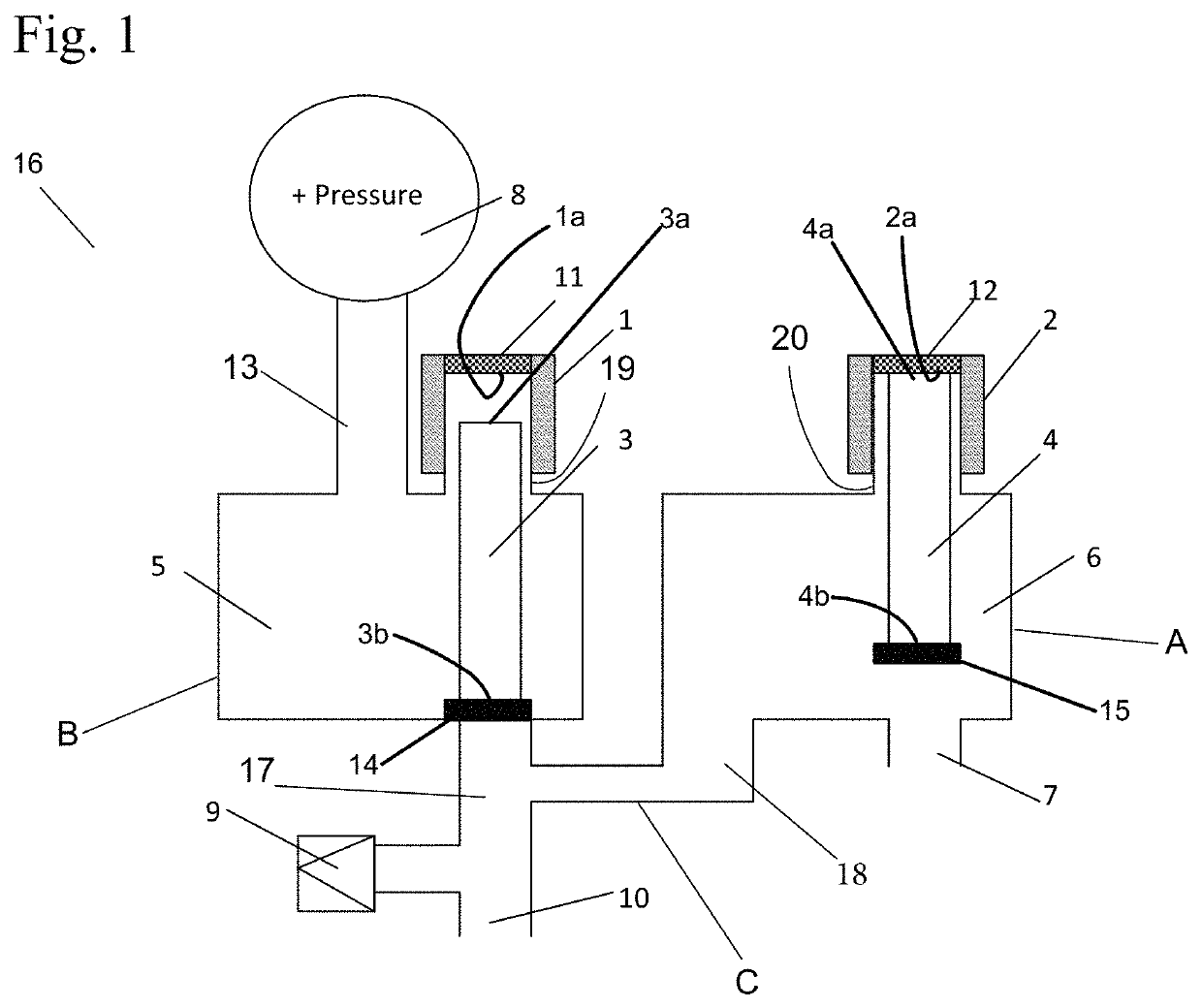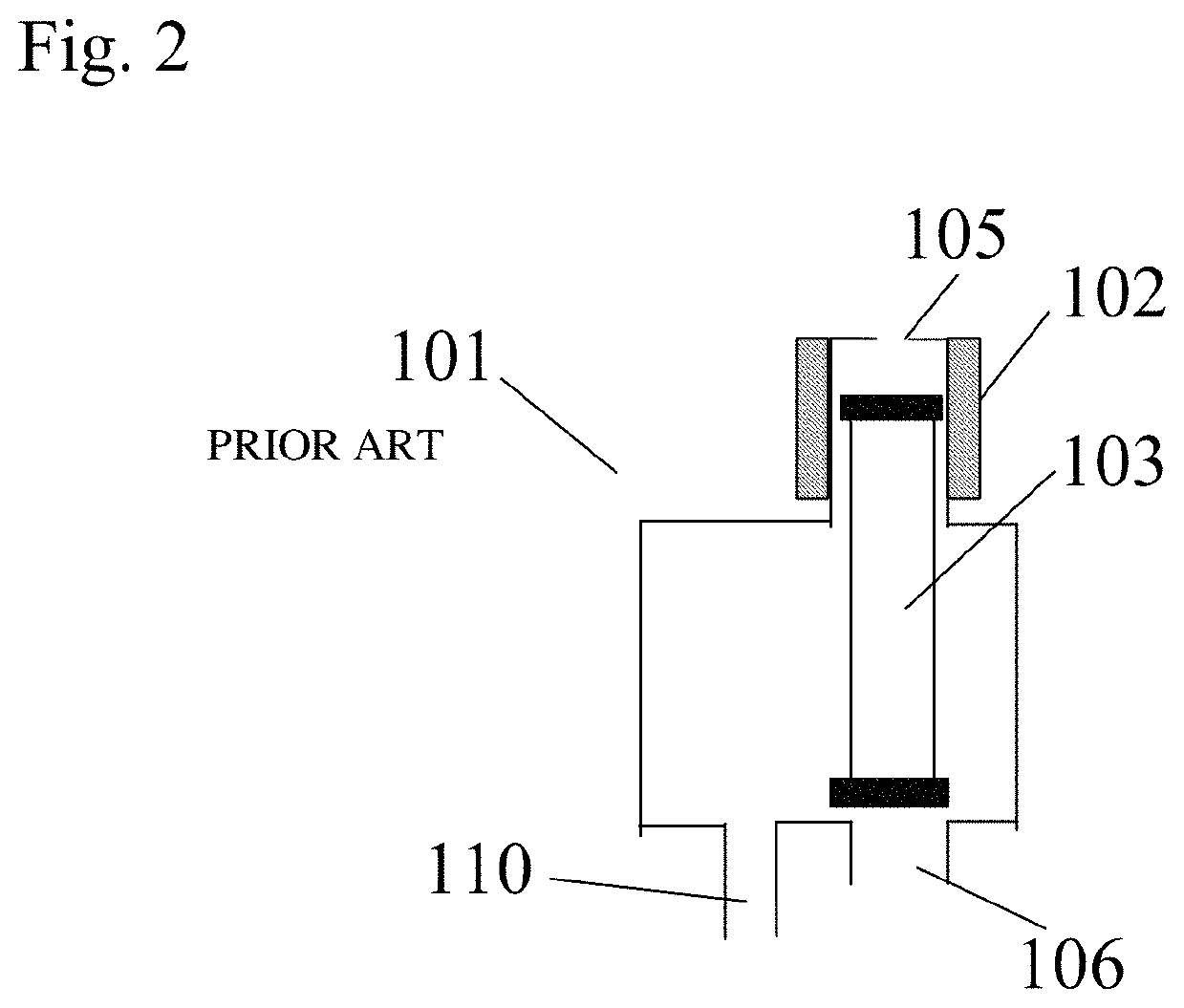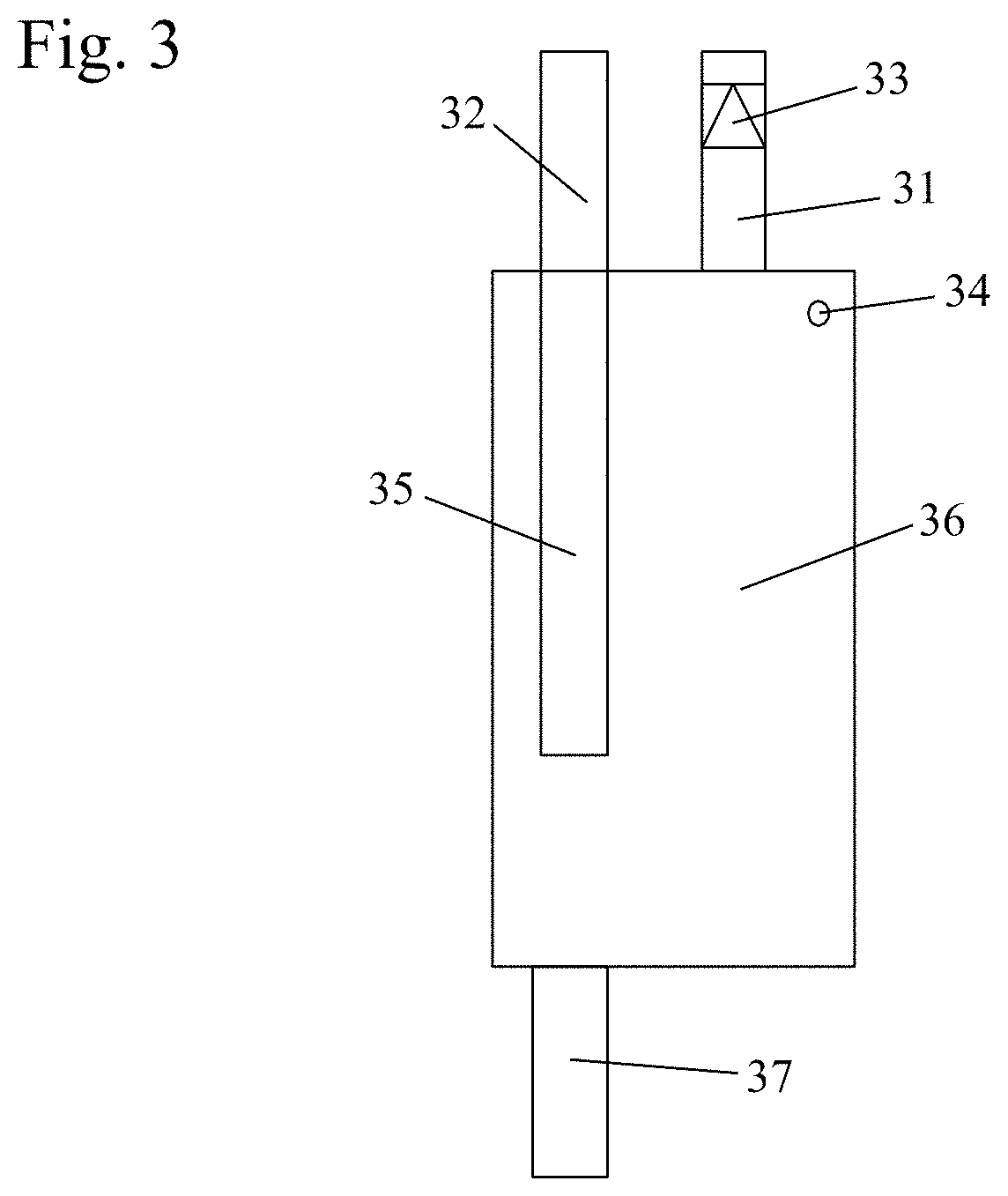Milking system
a technology of milking system and vacuum system, which is applied in the direction of process and machine control, instruments, computer control, etc., can solve the problem of preventing the location of the vacuum transducer from being placed near the receiver, and achieve the effect of optimizing the milking system performance, reducing fluid flow restrictions, and improving vacuum system efficiency
- Summary
- Abstract
- Description
- Claims
- Application Information
AI Technical Summary
Benefits of technology
Problems solved by technology
Method used
Image
Examples
Embodiment Construction
[0032]Referring to FIG. 1, a pulsator valving mechanism (16) used in the milking process of animals is shown. The basic design of this pulsator is described in U.S. Pat. No. 5,697,325. Prior art design pulsators, including the one described in U.S. Pat. No. 5,697,325, utilizes ambient air as the source of fresh air to provide pulsator output or common outlet (10) with atmospheric pressure air during the rest phase of the milking action. Prior art pulsators typically access atmospheric air directly through open ports in the pulsator or through connections to fresh air supply pipes having air filters incorporated to remove airborne debris.
[0033]It is desirable to provide a source of greater than atmospheric pressure air to the pulsator to ensure an adequate supply of fresh air within a filtered fresh air supply to the pulsator and to compensate for the large pressure drop between the pulsator and the cluster as the distance between the two becomes large. The greater than atmospheric p...
PUM
 Login to View More
Login to View More Abstract
Description
Claims
Application Information
 Login to View More
Login to View More - R&D
- Intellectual Property
- Life Sciences
- Materials
- Tech Scout
- Unparalleled Data Quality
- Higher Quality Content
- 60% Fewer Hallucinations
Browse by: Latest US Patents, China's latest patents, Technical Efficacy Thesaurus, Application Domain, Technology Topic, Popular Technical Reports.
© 2025 PatSnap. All rights reserved.Legal|Privacy policy|Modern Slavery Act Transparency Statement|Sitemap|About US| Contact US: help@patsnap.com



